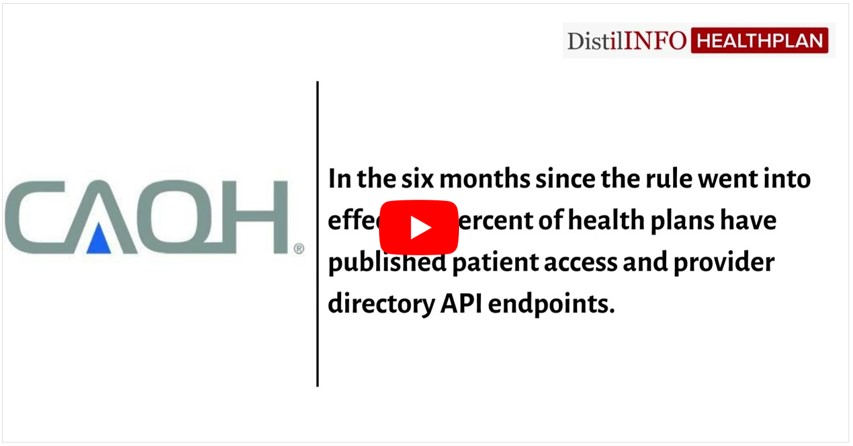
More than two-thirds have published a patient access point in compliance with the Final Interoperability and Patient Access Rule, according to a study from the Council for Affordable Quality Healthcare (CAQH).
“After years of discussing how to grant patients access to their healthcare information, progress is being made,” the CAQH study found.
The study covered 97 payers—both public and private—that covered 108 million lives. Individually, the payers each covered more than 300,000 CMS lives.
Three-quarters of all CMS-covered lives were in a health plan that had published patient access and provider directory application programming interface (API) endpoints, in accordance with the Final Interoperability and Patient Access Rule.
The rule, which had been set to go into effect on January 1, 2021, was delayed due to the coronavirus pandemic and was enacted on July 1, 2021.
In the six months since the rule went into effect, 64 percent of health plans have published patient access and provider directory API endpoints. The availability of patient access APIs and provider directory APIs were roughly the same.
However, while a large share of health plans published these endpoints, not all of them made the endpoints publicly available. The study found that only 46 percent of payers that published their patient access endpoints had made the endpoints publicly available.
Of the 64 percent of payers that made the provider directory endpoint available, less than half (44 percent) did so without registration and less than three in ten (27 percent) of the payers that made the endpoint available published the provider listings without registration.
CAQH found that private payers were leading the charge in making endpoints available. The organization noted that, at least for Medicaid programs, the coronavirus pandemic may have delayed progress on compliance with the interoperability rule.
Less than 20 percent of fee-for-service Medicaid programs had published the patient access endpoint and a similar share had published a provider directory API, according to a graph in the study. Few or none had made the endpoints public.
Managed care plans were farther along. Nearly 80 percent had published the patient access endpoint and around the same amount had published the provider directory API. Still, a significant share of this population had not made those endpoints publicly available.
Security concerns, the use of a single infrastructure for both the provider directory and patient access APIs, and performance issues have all hindered payers’ progress toward compliance.
“In the coming months, CAQH will be working with payers and other industry groups to help educate stakeholders, identify and exchange best practices and help payers and apps connect and share information to support patients in accessing their own health information,” the study concluded.
CAQH has spearheaded efforts to streamline and accelerate payers’ efforts at compliance with the rule. In 2021, the payer launched its CAQH Endpoint Directory to help connect payers and Medicaid programs with app vendors. The organization beta tested the directory from December 2020 through January 2021 before releasing it.
Other organizations have promoted automated data transfer as a key way to speed up payers’ progress on interoperability adoption. For example, CommonWell Health Alliance created a tool that enables automatic data retrieval and exchange. This approach can cut down on time and administrative burden, proponents argue.
Other interoperability regulations may be coming down the pipeline. While the proposed 2022 payer-to-payer data exchange has been placed on hold due to the coronavirus pandemic and other barriers, CMS has urged payers to prepare for payer-to-payer transfer as they build out their patient access APIs and provider directory APIs.
Source: HealthPayer Intelligence

